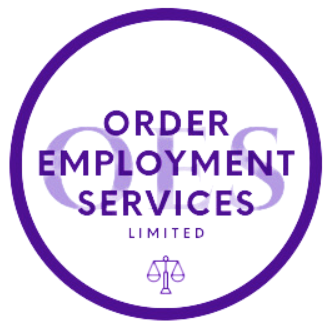
Terms and Conditions / All Services
Comprehensive Guide to Employment Contracts for UK SMEs
Reduce operational costs
Increase profitability
Improve efficiency
Achieve business aims
For the UK's bustling SME sector, understanding the ins and outs of employment contracts is not just administrative due diligence; it's the cornerstone of a thriving business. Balancing employee rights with employer responsibilities can feel like walking a tightrope. With each clause and condition, you're not only outlining expectations but also building the foundation of a relationship that can bolster your business’s success or become a pitfall if mishandled. The stakes are high, and the need for clarity is paramount.
As we delve into the depths of employment contracts, we must be mindful of the evolving landscape of work. Flexible working policies, the rise of remote work, and the ever-present quest for work-life balance are reshaping the traditional contract. These shifts bring new challenges and opportunities for SMEs, making the mastery of employment contracts a strategic advantage in today's competitive market.
In this guide, we will journey through the essentials of what constitutes an employment contract in the UK, from the basics of crafting a legally compliant document to the nuances of integrating employee wellbeing and flexibility into the fine print. We will provide actionable advice, grounded in legal expertise and HR best practices, to ensure that your contracts not only meet legal requirements but also support your business's and employees' evolving needs.
Join us as we unpack the complexities of employment contracts, offering you the knowledge and tools to navigate this critical aspect of your business with confidence and agility.
Understanding Employment Contracts
Demystifying Employment Contracts
At first glance, an employment contract might seem like a mere formality—a simple exchange of services for compensation. However, in reality, it is a multifaceted instrument that defines the scope of work, expectations, and the legalities governing the employment relationship. In the UK, an employment contract is not just a good practice—it's a legal necessity.
Legally, an employment contract must encapsulate the rights and duties of both the employer and the employee. It should clearly stipulate the job role, salary, work hours, terms for absences, and conditions for termination. Yet, beyond these basics, it should also reflect an understanding of specific legal entitlements such as maternity and paternity leave, sick pay, and holiday entitlements.
Financial Implications and Legal Requirements
The Economic Side of Employment Contracts
The financial implications of employment contracts extend beyond the payslip. They encompass various economic responsibilities that an employer must fulfil—pension contributions, national insurance, and adherence to statutory pay for leave entitlements. An understanding of these economic aspects is critical for SMEs to budget accurately and avoid legal pitfalls.
Legally, SMEs are obliged to provide a written statement of employment particulars on day one of the employee's start date. This document, often mistaken for the contract itself, is actually a summary of the main conditions of employment as mandated by UK employment law. A comprehensive employment contract goes further, detailing the obligations and rights that govern the employment relationship. This includes outlining procedures for grievances, redundancies, and the use of psychometric testing in the recruitment process.
The contract should be a living document, reflective of the current legal landscape. This means regular updates to incorporate legislative changes, such as adjustments to the length of maternity leave in the UK, and to ensure compliance with new regulations, such as those pertaining to the flexible working bill.
Strategies for Employment Contract Management
Tailoring Contracts for Business Success
Strategic employment contract management is essential for SMEs. It involves not just drafting a document but also ensuring that it aligns with the business's operational requirements and strategic objectives. The employment contract is a tool for risk management, an agreement that can safeguard the business from potential disputes and enhance employee engagement.
Incorporate performance metrics within the contract to clarify expectations and align them with the company's strategic direction. These metrics can serve as a basis for performance reviews and inform decisions regarding professional development opportunities, thereby influencing recruitment strategies and job evaluations.
Managing employment contracts strategically can ensure that your workforce is synchronised with your company’s goals. This involves setting out clear parameters for employee performance and development within the contractual framework. Moreover, it's about staying ahead of the curve by anticipating changes in employment law and adapting your contracts accordingly.
Professional Development: Integrate avenues for training and up-skilling within the employment contract. This not only motivates employees but also prepares your organisation for future industry shifts.
Flexible Work Arrangements: Reflect the growing trend towards flexible working by including provisions for such arrangements in the contract. This demonstrates a forward-thinking approach and commitment to work-life balance.
Regular Reviews and Updates: Employment law is dynamic, and your contracts should be too. Implement a routine review process to ensure your contracts remain compliant and relevant.
Technological Solutions for Employment Contracts
Embracing Tech to Simplify Contract Management
In the digital age, technology provides powerful tools for managing employment contracts. From cloud-based HR systems to contract management software, there are numerous options available that can streamline the creation, execution, and maintenance of employment contracts.
Automation: Software solutions can automate many aspects of contract management, such as tracking renewal dates, managing amendments, and ensuring that current contracts are in compliance with the latest laws.
Digital Storage and Access: Cloud services offer a secure way to store contracts that can be easily accessed by HR personnel, reducing the need for physical storage and simplifying the retrieval process.
E-signatures: The use of electronic signatures can expedite the contract signing process, making it more efficient and environmentally friendly.
Investing in such technological solutions can result in significant time and cost savings for SMEs. By digitising the contract lifecycle, businesses can reduce administrative burdens and allocate resources more effectively.
Case Studies and Real-World Examples
Learning from the Experiences of Others: The Ins and Outs of Employment Contracts
Success Stories: Strategic Employment Contracts in Action
Empowering Employees and Employers: The Case of Employer A Ltd.
Employer A Ltd a growing tech firm with 80 employees, faced a significant challenge: how to manage intellectual property rights and confidentiality in a highly competitive industry. By creating a tailored UK employment contract template, they incorporated robust non-disclosure and intellectual property clauses. The outcome was twofold: a fortified legal position against potential breaches and a clear signal to employees of their pivotal role in protecting company assets. The result? A surge in trust and a drop in staff turnover by 15% within two years.
Boosting Morale and Clarity: The Journey of Employer B Design
At Employer B Design, a mid-sized graphic design company, the issue was murky job descriptions leading to overlaps and workplace friction. They decided to redefine their employment contract UK template, delineating roles with precision and incorporating performance benchmarks. The clarity this brought to their workforce was transformative, leading to a 20% increase in productivity and an enhanced company culture, as measured by internal surveys.
Challenges Overcome: Turning Obstacles into Lessons
Navigating Rough Seas: Employer C Imports Ltd.
Employer C Imports Ltd, an import business with a people count of 30, encountered rough waters when they faced legal complications due to ambiguous contract terms. A dispute arose over overtime calculations, stirring unrest among employees. By revisiting their employment contract template, UK legal advice in hand, they not only resolved the dispute but also future-proofed their contracts against similar issues. This proactive approach saved them from potential litigation and restored employee confidence.
The Compliance Hurdle Employer D Catering Co.
For Employer D Catering Co., a local catering service with a tight-knit team, adapting to changing employment laws proved to be a steep learning curve. Their existing contracts were non-existent, leaving them vulnerable to non-compliance penalties. Their turning point came when they utilised a comprehensive UK employment contract which reflected the latest legal standards. This strategic move not only secured them from legal risks but also attracted quality staff looking for a compliant and conscientious employer.
The Blueprint for Contractual Success
The sample of case studies across the UK SME landscape provides a rich mine of lessons on the importance of a well-crafted employment contract. The successes underscore the value of contracts that align closely with business objectives and the evolving legal environment. Meanwhile, the challenges serve as cautionary tales that remind us of the critical need for diligence, foresight, and adaptability in contract formulation.
In reviewing the case studies of UK SMEs, the key takeaways highlight the profound impact that well-managed terms and conditions can have on the health and success of a business. Here’s what employers can learn:
1. Precision in Role Definition: As shown by Employer B Design, specifying roles can prevent overlap, reduce friction, and enhance productivity. It’s vital for each employee to know their responsibilities.
2. Updating Contracts with Legal Changes: Employer D Catering Co experience demonstrates the necessity of keeping contracts up to date with current laws to avoid penalties and to attract conscientious employees.
3. Protecting Business Interests: The Case of Employer A Ltd illustrates that including clauses on intellectual property and confidentiality can safeguard your business’s critical interests, boosting trust and reducing turnover.
4. Proactive Problem-Solving: Employer C Imports Ltd challenge with overtime disputes teaches us that proactive contract reviews can avert future disputes and maintain employee morale.
By taking these lessons onboard, employers can foster a stable work environment where clear expectations and legal compliance pave the way for mutual growth and success. Remember, your employment contract is more than a legal necessity; it’s a strategic tool that, when used wisely, can significantly benefit both your business and your employees.
Bringing It All Together
To conclude, understanding and managing employment contracts is a critical component of running a successful SME in the UK. The strategies, technological tools, and real-world examples discussed here provide a blueprint for effective contract management.
Remember, employment contracts are more than legal documents—they are the foundation upon which successful employer-employee relationships are built. By crafting contracts that are clear, compliant, and reflective of your company's values, you create a positive work environment and set the stage for long-term success.
Taking the Next Steps
Now that you're equipped with this knowledge, it's time to take action. Review your current contracts, consult with legal and HR experts, and consider how technology can aid in your contract management process.
For Continuous Learning: Subscribe to our newsletter to stay updated on the latest in employment law and HR best practices.
For Personalised Support: Contact us to schedule a consultation and discuss how we can assist with your specific HR and employment contract needs.
With these resources and a commitment to strategic HR management, your SME can not only comply with the law but also create a work environment that fosters growth, innovation, and employee satisfaction.



